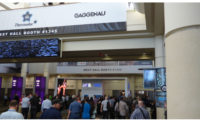
A new study by the World Business Council for Sustainable Development (WBCSD) finds that key players in real estate and construction misjudge the costs and benefits of “green” buildings, creating a major barrier to more energy efficiency in the building sector.
Respondents to a 1,400 person global survey estimated the additional cost of building green at 17% above conventional construction, more than triple the true cost difference of about 5%.
At the same time, survey respondents put greenhouse gas emissions by buildings at 19% of world total, while the actual number is double this at 40%.
The report, “Energy Efficiency in Buildings: Business Realities and Opportunities,” summarizes the first phase of the WBCSD’s Energy Efficiency in Buildings Project, a three-year initiative to assess the environmental impacts of buildings and develop means to achieve zero net energy use for residential and commercial buildings. Zero net energy buildings will reduce demand by design, be highly efficient and generate at least as much energy as they consume.
The project is co-chaired by Hartford, Conn.-based United Technologies Corp. and French building materials company Lafarge. The study highlights opportunities to promote green building know-how and technologies as the WBCSD pushes for zero net energy construction worldwide.
“Life cycle analysis shows that 80% to 85% of the total energy consumption and CO2 emissions of a building comes from occupancy through heating, cooling, ventilation and hot water use,” said Bruno Lafont, chairman and CEO of Lafarge. “If we want to make an impact on climate change, we therefore need to tackle this challenge. Combining the right materials when designing a building envelope can greatly reduce a building’s energy requirements, increase its life span and ensure consistent performance over time.”
Headquartered in Geneva, Switzerland, the World Business Council for Sustainable Development is a global association of about 200 companies that serves as a business advocate for sustainable development through economic growth, ecological balance and social progress. Its members are drawn from more than 35 countries and 20 major industrial sectors worldwide.
For a downloadable copy of the report, visit the World Business Council for Sustainable Development’s Web site at www.wbcsd.org.


